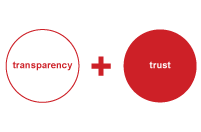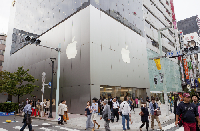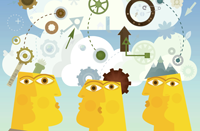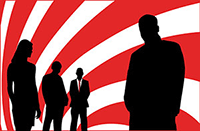| |
 Design thinking vs design history: Design thinking vs design history:
Why it matters to future-makers
As innovators, we rarely look back. After all, the rearview mirror is only for reversing. Design thinking methods and processes help us to get away from our analytical traps about the past, that can often lead to incremental, rather than breakthrough innovation. These approaches also offer a common language to work collaboratively. But with all that goodness, are we missing something? Should design history also matter to future-makers?
Our recent focus on design thinking really got its momentum from IDEO and the dSchool at Stanford. A school of thought that brought human-centered approaches to an otherwise more engineering or industrial design focused discipline. It also provided non-designers in business and government a way to tackle innovation challenges with a ‘prototype’ mentality. This enabled more perspectives and flex than the tyranny of traditional business planning or formal strategy development would allow.
Read full article by Teresa Di Cairano
 Business Model Innovation: Business Model Innovation:
Avoiding the 'Official Future' Trap
Business model innovation differs from traditional product and service innovation. It focuses on creating a new value proposition, which, at times, can also become a game changer. This positions organizations proactively and creates a sustainable advantage. Often more than a snappy new product design, it brings a fundamental shift in how the organization (and sometimes the sector) operates. Because of this, business model innovation hits the heart and soul of the organization.
Read full article by Teresa Di Cairano
 Open Innovation: Co-creation Strategies Open Innovation: Co-creation Strategies
While businesses increasingly respond to compressed innovation cycles, governments are pressured to evolve their organizations to one of more responsive and cost-effective service delivery. As new strategies emerge, organizations need to make a shift in their states and align their operations to respond to a new reality.
Whether the terms used are innovation or business transformation change agents are tasked with creating a roadmap for the future.
So what tools do leaders use to make sense of these changes and build a blueprint for moving forward?
Read full article by Teresa Di Cairano
 Creating environments that support innovation Creating environments that support innovation
innovationcultures spoke with Andrew Kim, Design Researcher at Steelcase WorkSpace Futures to discuss what factors they were exploring in creating work environments that support collaboration and innovation. His background is in human-centered design and innovation planning and he is part of the core innovation group that focuses on innovation in the far timeframe. What follows are some of the big ideas they are working on.
Read full article by Teresa Di Cairano
 Innovation in the Public Sector: Innovation in the Public Sector:
Changing the Cultural DNA?
There is a part of the economy where change appears to be so imperceptive that innovation in government would appear to be an oxymoron. While hoody-wearing-start-up entrepreneurs gather around counter-culture cafes and hip offices to discuss the next big thing in the likes of Silicon Valley and other innovation hubs, the public sector often lags behind in innovation.
Read full article by Teresa Di Cairano
 Adapt or Die: The Darwinism of Apple Adapt or Die: The Darwinism of Apple
Love, hate, envy, accept. Coming to terms with Apple’s dominance is not easy for everyone. There are mixed feelings, and allegiances that run deep in the tech world. However, there is no denying the impact Apple has had on innovation culture, not just in the realm of technology, but across all industries. Competitors and admirers alike are all rushing to emulate the creative model at the core of Apple’s success.
So what’s the secret? How has Apple, a once endangered species, crawled back from the brink of extinction to become an example of a flourishing organism?
Read full article by Richard Papanicolaou
Myths and Facts on Innovation
Team group work, open spaces, coffee – these seem to be unquestioned elements of innovation teams and most office work in general. But are these just artifacts that support our myths about the workplace? Innovation cultures editorial director, Teresa Di Cairano, chatted with Philippe De Ridder—innovation consultant and co-leader of Intervista’s Innovation Camp—as well as dug up some research on whether these are myths or facts.
Read full article by Teresa Di Cairano
 Ask the expert: The Future of Work Ask the expert: The Future of Work
Intervista spoke with thought leader and futurist Stowe Boyd to get his take on the Future of Work. What follows is Stowe’s deep insight on work in a postnormal economy as well as a sneak preview on trends and tools he will be exploring in our upcoming Future of Work seminar.
What are some of the key forces impacting the future of work?
I think there are three forces transforming the world of work today. The tempo of competition and complexity has risen to a new ‘beyond chaotic’ pace, and it is increasing, pushing the economy over a threshold into a new economic era, the post normal, in which the primary response of business will be the adoption of a fast-and-loose style of business operations. Fast-and-loose is not meant to suggest shadiness or sloppiness, but instead agility, resilience, and a predisposition toward experimentation, innovation, and action, as well as a seemingly paradoxical loosening and increase of the social connections between people.
Read full article by Teresa Di Cairano
The Future of Workspaces with TD Bank
We interviewed Mike Loftus, VP Workspaces at TD Bank’s Information Technology group. He is an energetic and innovative leader that runs Workspace Services where he is responsible for the technologies that TD employees use to communicate, collaborate and be productive. He is also deeply involved in Flex Workplace, which is a real estate led program that is changing TD’s physical Workplace. “Ultimately, the Workspace Services program is trying to drive standardization, flexibility and efficiency in the tools, and our technologies are there to help staff really exploit the new real estate capabilities and enable the future of work,” says Mike Loftus.
As I prepared for the interview, a few things came to mind. First we are dealing with a large bank here and probably as traditional an organization as they come. Secondly, along with the iconic buildings and other physical artifacts that communicate trust, there must be a certain baggage that comes with the work culture.
So how does a traditional employer such as a bank become a trend setter in work spaces?
Read full article by Teresa Di Cairano
 Implementing Innovation and Transformation: Implementing Innovation and Transformation:
Creating a Roadmap for the Future
There is nothing permanent except change. If you want to sound brainy, this quote is from the Greek philosopher, Heraclitus, but has been echoed by many. It reminds us of the perpetual lifecycle that organizations, the economy and people go through.
Read full article by Teresa Di Cairano
The New Aesthetics of Work 
Over the past decade, how we work and where we work have undergone dramatic change. Telework has become so commonplace that the unlovely term no longer is used. We are simply working wherever we are: at home, at the café, at the airport, and in the office cafeteria. We are spending less time in cubicles as companies seek to unlock creativity and innovation through open space designs, and rethinking the rationale for being in the office, at all.
Ubiquitous connectivity and mobile devices have become the norm, allowing us – or inducing us – to stay always on, always connected.
Read full article by Stowe Boyd
 Organic Ideas May be Better for You Organic Ideas May be Better for You
Much has been written recently about the limitations of brainstorming as a useful technique for creativity and innovation. Brainstorming techniques try to pull ideas out of people’s heads, often by trying to get them to think in non-linear ways leading to more random associations and arguably better - or at least more - ideas. Why the need for more creativity?
Read full article by Teresa Di Cairano
Design we love and why we do 
At a shopping excursion with my then fifteen-year-old fashionista daughter, she not only pronounced her unending love for a pair of Jeffrey Campbell shoes but finally declared “I want to marry these shoes!”. I probably spend too much time trying to persuade my busy customers that they really should separate themselves from their money.
While, we know design matters for creating innovative offerings people want to buy, I wonder what is it that makes us love the design of some products and services more than others?
Read full article by Teresa Di Cairano
Enterprise Cloud Computing Strategies: 
IT as a utility – Are we there yet?
Cloud Computing promises, over the next several years, to reduce the day-to-day operational costs of information and communications technology, improve financial flexibility, and deliver on-demand, scaleable infrastructure, platform, and applications capabilities. In the long term, it may allow computing to be perceived as a utility like electricity supply.
Well, where are we now?
Read full article by Mick Kahan
 Getting to the Executive Office with IT Portfolio Management Getting to the Executive Office with IT Portfolio Management
As a change agent, the CIO’s office can play a critical role in enabling strategic enterprise transformation. In a previous article, we noted how Business Architecture can assist in providing a blueprint for current and future business states. With IT Portfolio Management, IT teams can also develop, plan and execute the operational capability to realize that transformation.
Read full article by Teresa Di Cairano
 Mapping the future with Business Architecture: Mapping the future with Business Architecture:
Agility vs. Innovation
Agility and innovation – what do they really mean? Most will probably agree that information technology is at the very least an accelerator – making it possible to respond faster and faster. Organizations benefit from this by increasing agility and shortening their reaction to changing environments.
The main benefit of IT transformation initiatives – which rest on a backbone of technology innovation - is often targeted at gaining agility through overcoming legacy costs and constraints. But does this necessarily bring with it the kind of game-changing business innovation that creates sustained competitive and strategic innovation?
Read full article by Teresa Di Cairano
 IT Portfolio Management – IT Portfolio Management –
An essential tool for today’s economic climate
While alignment has been the holy grail of Enterprise and Business architecture,
IT Portfolio Management provides a tangible way to make sure business and IT synergy
actually occurs.
Read full article by Teresa Di Cairano
 What Information Architects can learn from Designers What Information Architects can learn from Designers
In the last decade or so, IT professionals have borrowed from the discipline of architecture with the goal of creating more responsive IS services. However, there may be something else to learn from the field
of design.
Leading practices in product design are undergoing a shift from
designer-led approaches to more client/user-centric ones. To get there, design researchers often use ethnographic techniques. Ethno…what? Ethnography is a branch of anthropology that studies the social behavior of people within a culture. So what does ethnography have to do with information technology professionals?
Read full article by Mick Kahan & Teresa Di Cairano
 Thinking Innovation: Why diverging on the road to the future may be a good thing Thinking Innovation: Why diverging on the road to the future may be a good thing
Trying to go further with less? Now more than ever, innovation has a critical role to play. The development of new products and services can act as an engine of growth and a remedy for theeffects of the ongoing worldwide economic uncertainties. So what kind of thinking does innovation need?
Read full article on-line by Richard Pachter
 Leveraging Talent Branding for Innovation Leveraging Talent Branding for Innovation
Can your team adapt when opportunities and conditions demand it?
In broader terms, does your organization have the ‘right stuff’ to innovate successfully? This should be among the most important questions leaders ask as they assess their organizations’ readiness for the changing demands of operational success today.
Read full article by Bob Duffy
 When Ideas Become Brands When Ideas Become Brands
Business Architecture is essentially about creating and continually refining the business artifacts that allow for appropriate automation of business and technical processes. In terms of the well-known Zachman Framework for Enterprise Architecture, Business Architecture encompasses the top two rows, the Scope (contextual) row, and the Business Model (conceptual) row.
Read full article by Michael Kahan
| |

Join thought leaders in Intervista's new
eLounge for new ideas, stories and musings on innovation and what's next.
Untitled Document
innovationcultures program
Whether you are an innovation leader or any professional, managing change is a fact of life. Our membership program will put the resources at your finger tips to help you manage the future faster. Learn more

We bring thought leaders from a variety of fields to leaders in challenging business and government environments, where it’s not business as usual.
Integrating ideas from technology, design, business and culture, to help your team make connections that enable innovative thinking.


IT Portfolio
Management
Learn More

Business Architecture
Learn More
 Information Services Information Services
Innovation
Learn more
 Services Innovation Services Innovation
for the Public Sector
Learn More

Innovation Camp
Learn more

The Future of Work
Learn More

Enterprise Architecture
Learn More

Agile Enterprise
Learn More
 Service-Oriented Service-Oriented
Architecture
Learn More
 Business Architecture Business Architecture
for Healthcare Transformation
Learn More

|

![]()
![]()

![]()
![]()